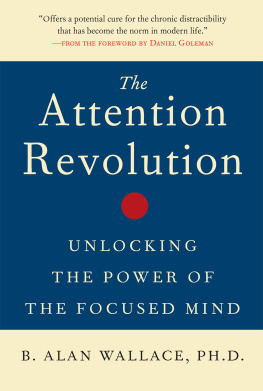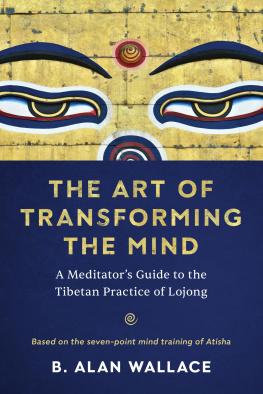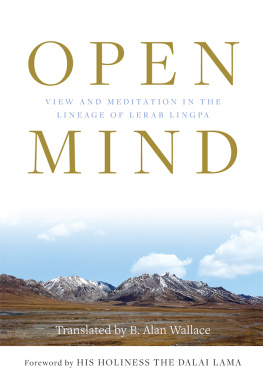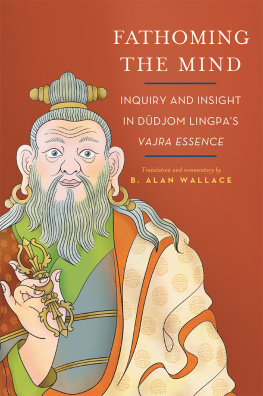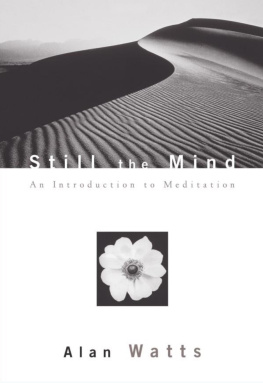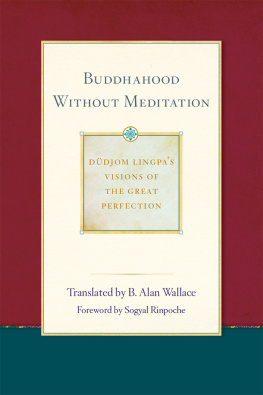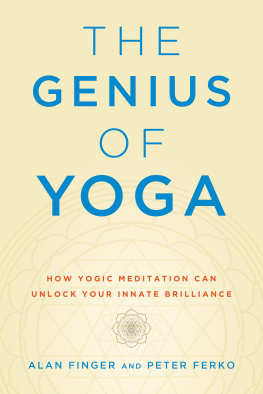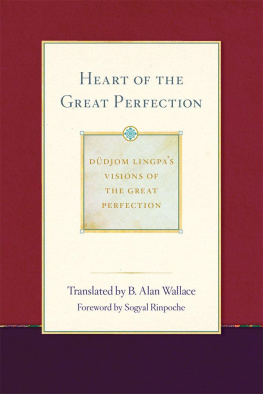MORE PRAISE FOR B. ALAN WALLACE AND THE ATTENTION REVOLUTION
A bold little book. Its subtitle is a boast and a lure, echoing the muscular self-help books that promise to make you better, stronger, faster. The Attention Revolution follows a rigorous ten-stage framework for meditation described by an eighth-century Indian Buddhist contemplative, but Wallace repeats often that you dont have to subscribe to any particular creed to experience the benefits hereyou just have to do the work.
Shambhala Sun
Analytical yet practical, Wallaces style conveys very clear instructions with calm authority.
Mandala
Attention is perhaps our most precious commodity. Alan Wallace provides a tutorial of a rigorous form of attention training, shamatha meditation, described in Buddhist texts and practices. Wallace notes that current interpretations of meditation practices such as mindfulness may not reflect the [Buddhas] original intent. In the current rush to apply many Eastern traditions to our Western culture, some very important elements of the original teachings and practices run the risk of being lost. This careful study is likely to lessen such losses.
Susan L. Smalley, Ph.D., Professor, UCLA School of Medicine
Wallace is one of the great Western Buddhist thinkers of our day.
Howard Cutler, co-author of The Art of Happiness
The Attention Revolution is not only for anyone who attempts to meditate, but for all of us who aspire to cultivate the quality of every instant of our lives.
Matthieu Ricard, author of Happiness: A Guide to Developing Lifes Most Important Skill
Splendid. We could not wish for a wiser, more compassionate and more experienced guide than Alan Wallace. [ ] I cannot recommend this book too highly. It is a joy to read. Having practiced (and struggled with) meditation for many years and written about it on a number of occasions myself, I find that Alan answers many of the questions and confusions I still carry with me. There is little more to say. Buy the book, enjoy it andif you willallow yourself to be changed by it.
Professor David Fontana, in Network: The Scientific and Medical Network Review
This book is a brilliant comprehensive analysis on the stages of the development of attentional balance and will be a classic in the field.
Joan Halifax, abbot of Upaya Zen Center and author of The Fruitful Darkness
Youll put it down feeling that meditation isnt about some existential leap to another ethereal plane, but rather the gradual and incremental development of what is ours to begin with.
Elephant
Wallace is exceptionally qualified to engage in the emerging research collaborations between neuroscientists and Buddhists. In this new book, he instructs readers in a ten-stage course of attention-enhancing meditation, which includes theoretical background and Wallaces personal stories. The book is shortbut undertaking the practices and reaping their benefits are a lifelong endeavor.
Shift
CONTENTS
FOREWORD BY DANIEL GOLEMAN
E very contemplative tradition has had its guidance manuals, the precious directions that seasoned practitioners pass on to future generations. Alan Wallace has done us all a great service, distilling centuries of practical wisdom on the path of shamatha into an accessible, ready-to-use format, a handbook for a profound inner journey.
Alan is uniquely suited to this task: he holds a remarkable intellectual and contemplative pedigree. When he and I first crossed paths, Alan was a monk in the Tibetan tradition of Buddhism, practicing under the personal tutelage of the Dalai Lama. When we next met, Alan was studying philosophy of science and quantum physics at Amherst College. By the time he got his doctorate in comparative religion at Stanford University, Alan had long been publishing a steady stream of scholarly books, ranging from inquiries into the metaphysics of science to translations of complex Tibetan philosophical texts.
But through all this intellectual pilgrimage Alan was preparing for what may be his true calling: as meditation practitioner and teacher. Over the years he would disappear for months at a time, to practice meditation on retreat in the foothills of the Himalayas or in the high Sierra semi-desert of Californias Owens Valley. Along the way Alan began to share what he had practiced, teaching retreats on shamatha meditation.
And since leaving his academic post at the University of California at Santa Barbara to head the Santa Barbara Institute for Consciousness Studies, Alan has been catalyzing a landmark research program: he will lead a large group of meditators in a months-long retreat designed to hone their attention to extraordinary levels. In cooperation with neuroscientists at the University of California at Davis, these meditators will be assessed before, during, and after this intensive training, to explore how the highly focused mind impacts the brain.
In The Attention Revolution Alan Wallace offers guidance in those same methods. In doing so, he offers a potential cure for the chronic distractibility that has become the norm in modern life, an addiction to splitting our focus between email and iPod, between the person we are with and the one on the cell phone, and between the present moment and our planning for the next one.
Alans proposition sounds simple but is quite radical: we can steadily enhance our capacity for attention, strengthening this mental ability just as we can our triceps. As with our physique, the key lies in well-aimed practice. This book details with remarkable clarity the specifics of methods that can strengthen the attentional muscle.
Alan has a brilliant talent for simplifying complex material. This small gem of a book summarizes the nuts-and-bolts of shamatha meditation into a handy and inviting package. Yet there are libraries of learned treatises unpacking and debating this very method and related territory of the mind. Alan brings a keen clarity to many of the fine points of this vast literaturethough for the serious student, there is much more to explore.
As with any contemplative tradition, there is a hidden, but essential, element for progressing along this path: a qualified teacher. Particularly at the higher levels of shamatha practice, these instructions have traditionally required additional direction in the form of pith instructions, the crucial details and correctives always given orally, teacher to student, that bring life to the printed page. For those who want to pursue the path Alan surveys here, such a teacher will be a prerequisite.
Yet any of us, as Alan points out, can benefit from improving our powers of concentration. There is a spectrum here, from those with outright attention deficits, to those blessed by a naturally keen focus, to advanced meditation practitioners. No matter where we find ourselves on this spectrum, The Attention Revolution offers practical steps for taking us to the next level, and reaping its rewards.
PREFACE
S ince the late nineteenth century psychologists and neuroscientists have studied attention, but virtually all their research has focused on people with normal or impaired attention. Many studies have been conducted, for instance, on the attention spans of people watching a radar screen, flying a jet, or playing a musical instrument. These efforts have provided little insight into whether attention can be trained. Neither do they indicate whether attention developed with regard to one activity can be applied to another.
We all know that our ability to focus depends on the amount of sleep we get, the stress were under, and other factors. And the benefits of focused attention are every bit as obvious as the detrimental effects of attention disorders. Thus the absence of scientific knowledge about healing attentional disorders or developing attention is remarkable. Many scientists simply assume that the human mind is inherently unstable and that little can be done to change this. It is a central argument of this book that not only can we improve our attention spans, we can do so dramatically.
Next page
